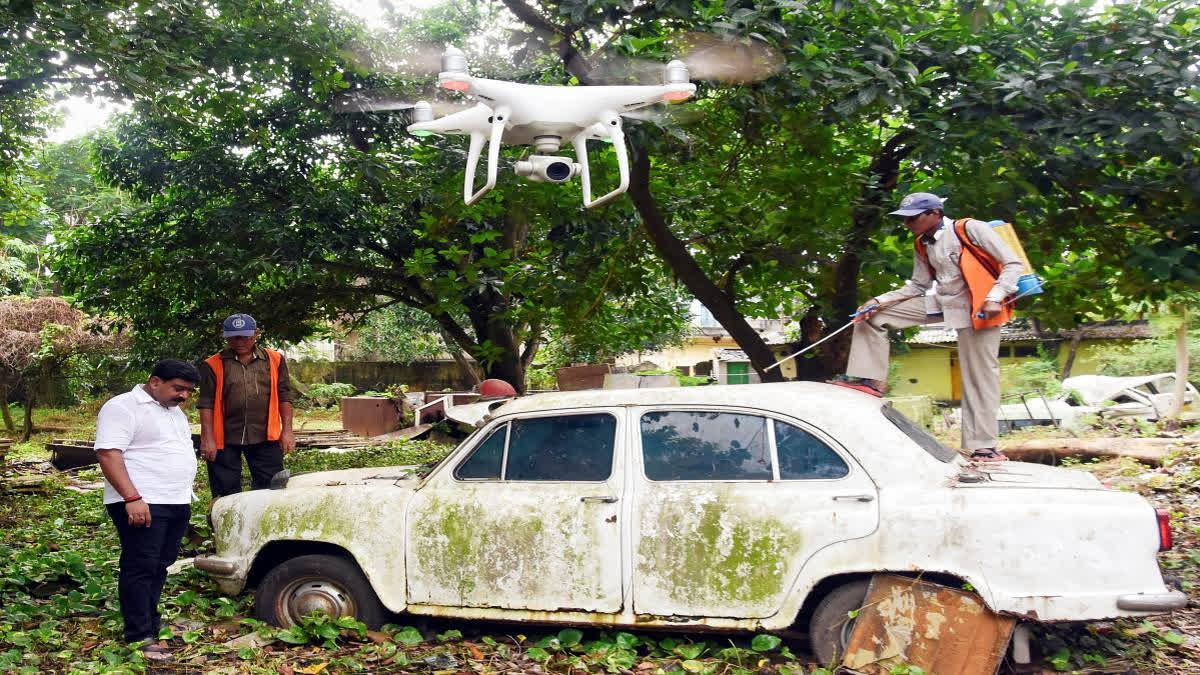New Delhi: As India is observing anti-malaria month in June, the Union Health Ministry has asked the Indian Medical Association (IMA) to help in their fight against malaria.
Top government official told ETV Bharat on Friday that the health ministry recently had a meeting with the representatives of the IMA seeking their suggestion and support in eradicating malaria.
"Yes, we had a meeting with the health ministry officials over the issue of malaria. The government has asked for the support of the private doctors across India to fight against malaria," Dr Shitij Bali, Finance Secretary of Indian Medical Association told ETV Bharat.
IMA has 1,700 branches across India with more than 3.85 lakh doctors. "As we have branches all over India and a team of doctors, the government has expectations that we can definitely help them. In fact, we are also ready to help the government in eradicating malaria from India," said Dr Bali.
According to Dr Bali, the Health Ministry has asked IMA to access the health management information system (HMIS), a dedicated portal to look after all health issues.
"We have given them some suggestions to simplify the portal, so that our doctors can also make maximum use of it," said Dr Bali.
National Anti-Malaria Month is celebrated every year from June 1 to June 30 to gear up against malaria, a disease spread by mosquito bites, and make every possible effort to prevent malaria before the arrival of monsoon.
Is malaria life threatening
Since 2020, as many as 351 people have died due to malaria across India with at least two deaths have been officially confirmed this year by the health ministry. Maharashtra and West Bengal have reported one casualty each due to malaria this year.
Malaria has been a major public health problem in India. It is a potentially life-threatening parasitic disease caused by parasites known as Plasmodium viviax (P vivax), Plasmodium falciparum (P falciparum), Plasmodium malariae (P malariae) and Plasmodium ovale (P ovale).
It is transmitted by the infective bite of Anopheles mosquito. A person develops disease after 10 to 14 days of being bitten by an infective mosquito. There are two types of parasites of human malaria, Plasmodium vivax, P falciparum, which are commonly reported from India.
Inside the human host, the parasite undergoes a series of changes as part of its complex life cycle. (Plasmodium is a protozoan parasite). Infection with P falciparum is the most-deadly form of malaria.
Magnitude of The Problem
Malaria is a public health problem in several parts of the country. About 95 per cent of the population in the country resides in malaria endemic areas and 80 per cent of malaria reported in the country is confined to areas consisting of 20 per cent of population residing in tribal, hilly, difficult and inaccessible areas.
Symptoms of Malaria
Typically, malaria produces fever, headache, vomiting and other flu-like symptoms. The parasite infects and destroys red blood cells resulting in easy fatigue-ability due to anemia, fits, convulsions and loss of consciousness. Parasites are carried by blood to the brain (cerebral malaria) and to other vital organs. Malaria in pregnancy poses a substantial risk to the mother, the fetus and the newborn infant. Pregnant women are less capable of coping with and clearing malaria infections, adversely affecting the unborn fetus.
Symptoms of severe and complicated Malaria
The priority requirement is the early recognition of signs and symptoms of severe malaria that should lead to prompt emergency care of patients. The signs and symptoms that can be used are non-specific and may be due to any severe febrile disease, which may be severe malaria, other severe febrile disease or concomitant malaria and severe bacterial infection.
The symptoms are a history of high fever, plus prostration (inability to sit), altered consciousness lethargy or coma, breathing difficulties, severe anaemia, generalised convulsions/fits, inability to drink/vomiting, dark and/or limited production of urine.
Risk of severe complications
In areas of low transmission - all age groups are vulnerable but adults develop more severe and multiple complications. The transmission pattern in most parts of India is usually low, but intense transmission is seen in north-eastern states and large areas of Odisha, Chattisgarh, Jharkhand and Madhya Pradesh.
In areas of high transmission - children below five years, visitors, migratory labour are vulnerable. Pregnant women are less capable of coping with and clearing malaria infections, adversely affecting the unborn fetus.
Malaria control strategies
The National Center for Vector Borne Disease Control (NCVBDC) under the director general of health service of the health ministry has initiated several action plans to stop malaria. Some of the major malaria control strategies include early case detection and prompt treatment (EDPT), vector control, community participation, environmental management & source reduction methods and monitoring and evaluation of the programme.




